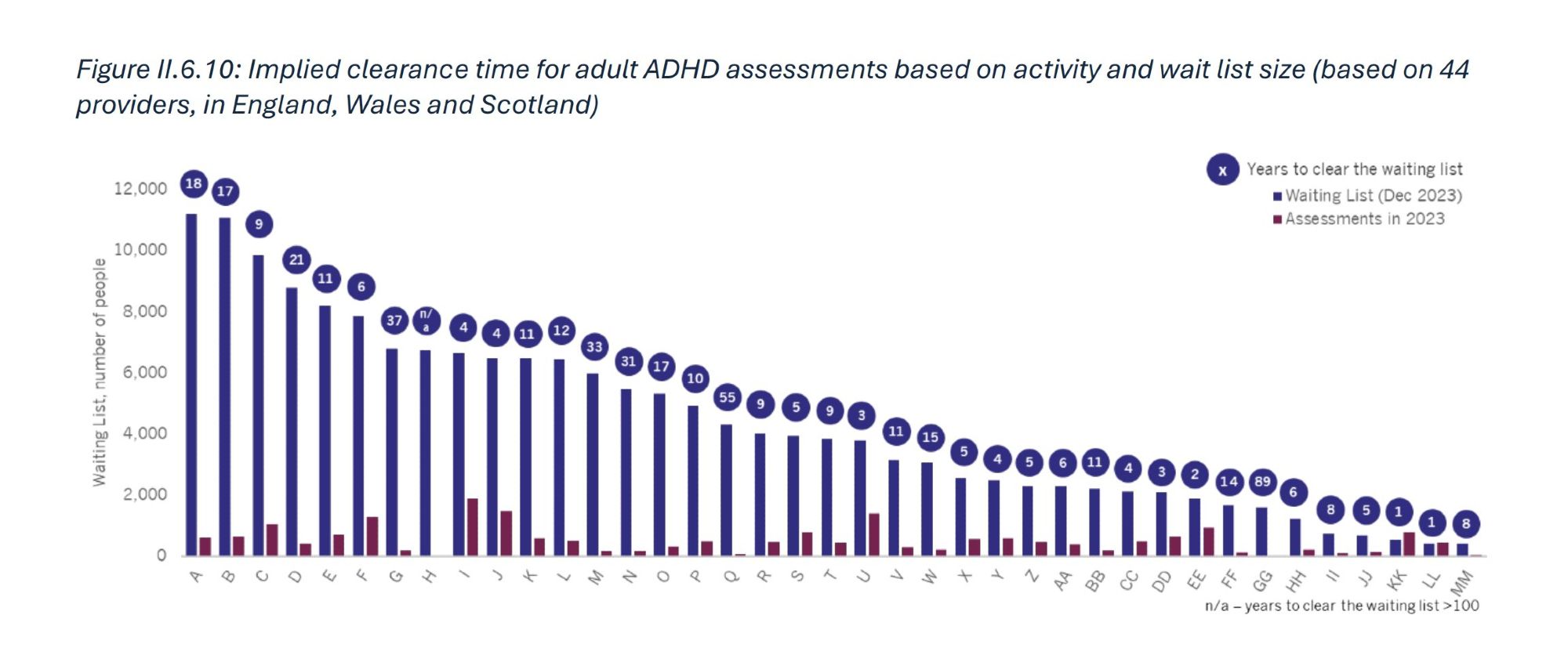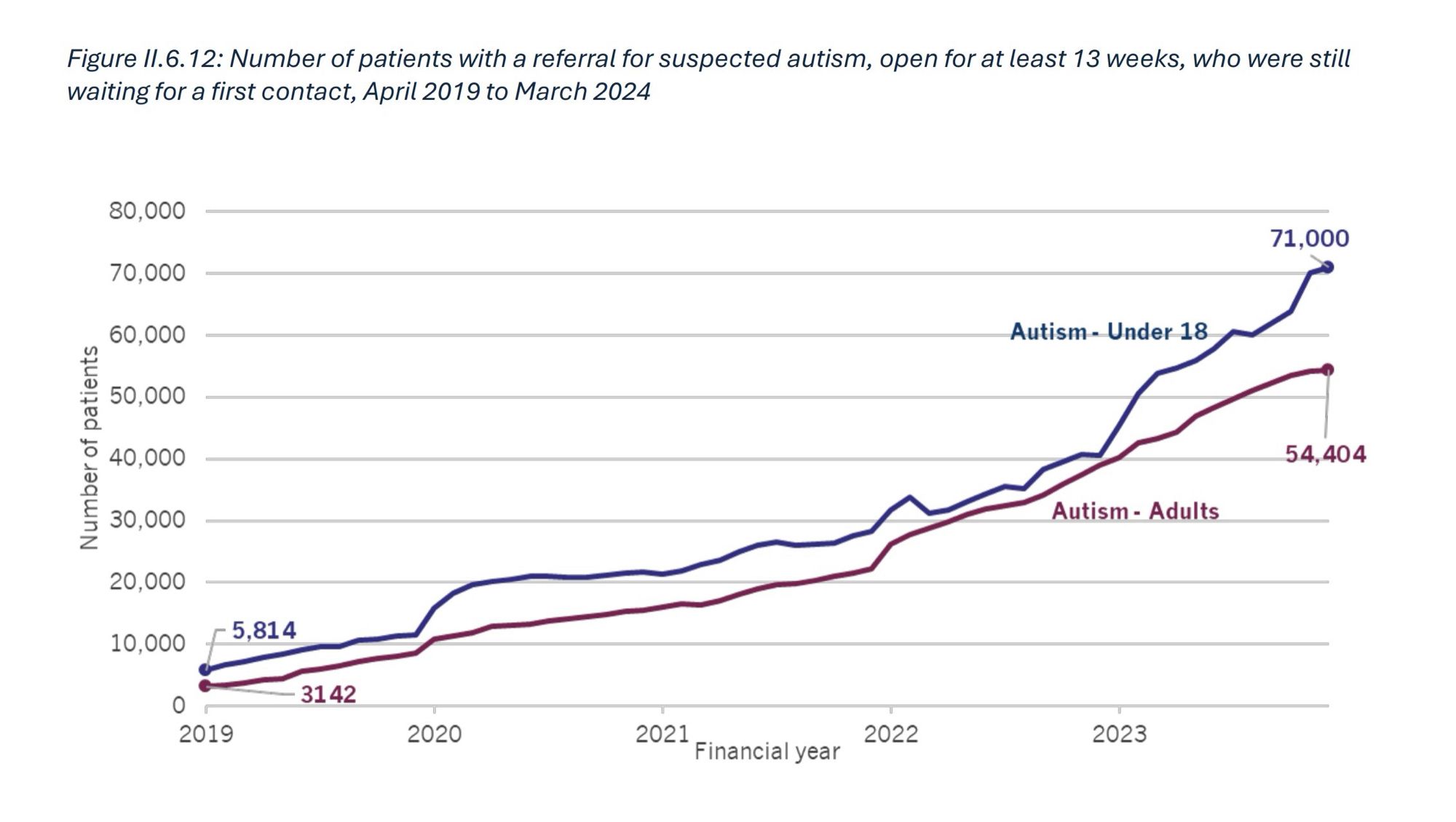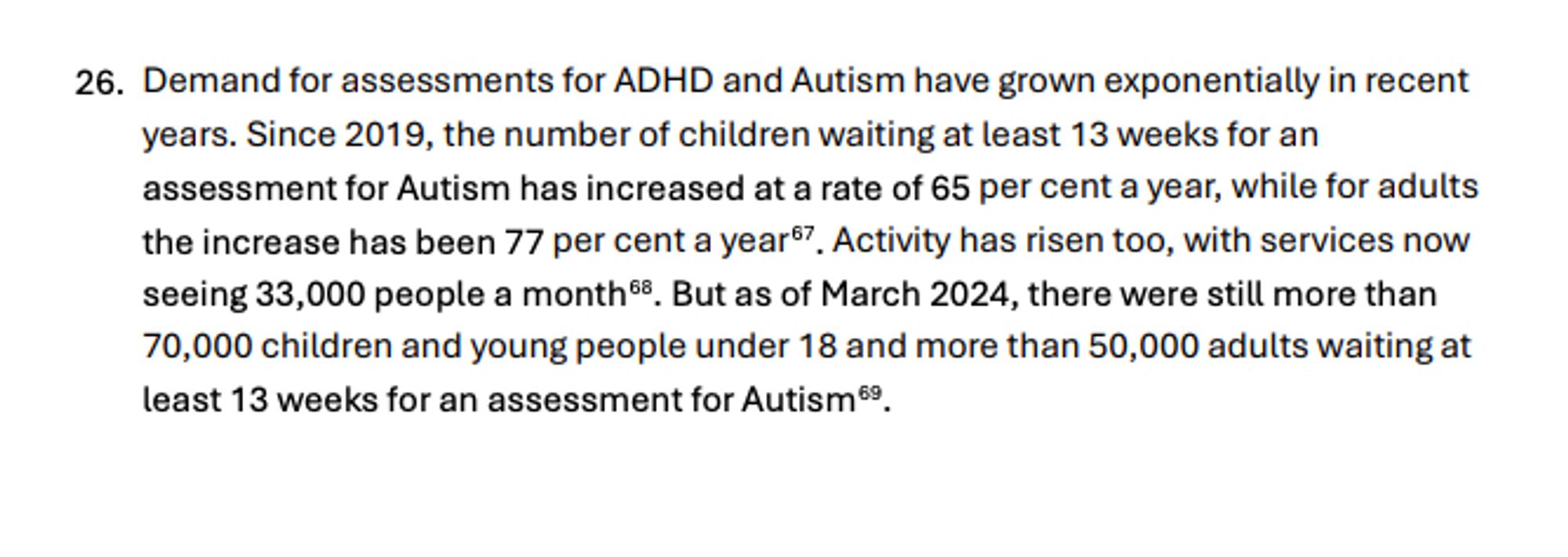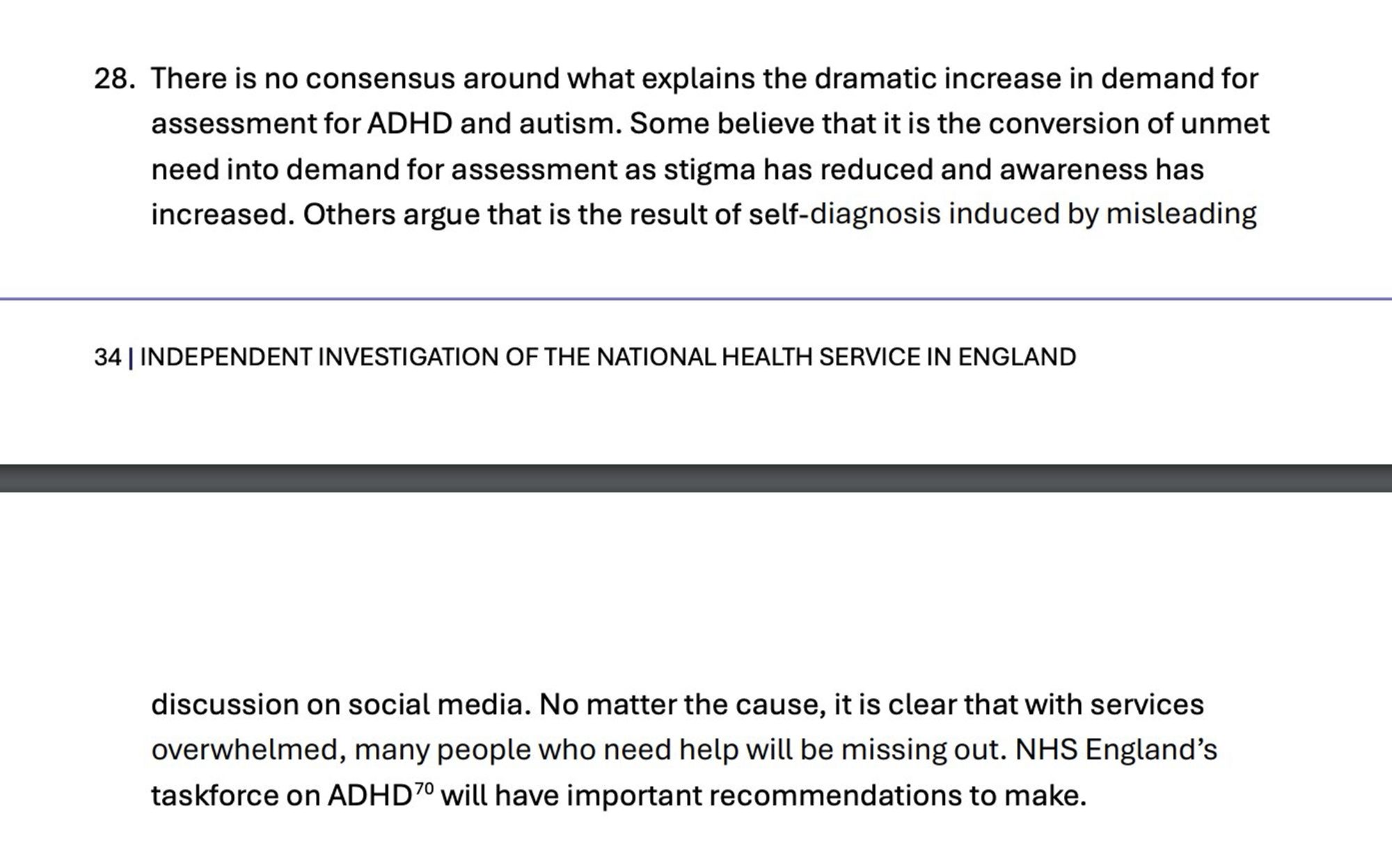Frustratingly, the #DarziReport only focuses on autistic people and those with ADHD through the lens of diagnostic assessment, which is a BIG issue, but to me, the bigger issue is what healthcare looks like (often inaccessible) after a diagnosis.
What do you mean 89 years or n/a years? Is there simply not a service despite the very real, very clear need for one? For n/a the waiting list looks to be approx 7,000 people with absolutely nowhere to go, waiting for what? That's clinically irresponsible and reprehensible. #DarziReport
Whilst the rate of autism assessment does not match clinical need it has nothing on the chasm in ADHD, which is shockingly bad. Some services will work through their current waiting list backlog in <4 years, many more 10-15, but the real shockers are 37, 55, 89 or n/a years. #DarziReport

Even before the discussion of ADHD and autism "exploded" on social media platforms a not insignificant number of people were waiting longer than the NICE guideline 13 weeks for an assessment. The system wasn't keeping up to begin with, let alone with more realistic pressures. #DarziReport

Is it possible that the increase in demand for ND assessments, which outstrip supply, is not in fact because of "misleading discussion on social media", but due to the decades of under-diagnosis leading to insufficient service provision? Surely not! #DarziReport


Yesterday's #darzireportmakingrightsmakesense.wordpress.com/2024/02/29/b...

Every winter many older people find themselves in hospital, for a variety of presenting reasons, and the news is full of stories of hospitals unable to discharge patients because of the lack of social...
Useful thread on the tech elements of the #Darzireport
For us wanting an upturn in the fortunes of adult social care, the #darzireport might prove a mixed blessing. Useful in spotlighting & one might hope redirecting influence & resources to adult social care. Unhelpful in consolidating social care principally as an NHS footsoldier